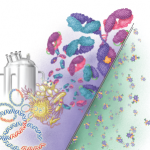Pathway to Approval
Biologics are expensive to produce and costly for payers and many patients, depending on their insurance coverage. Adalimumab and etanercept have retail costs of $3,000 and higher per monthly dose, although coupon programs can reduce out-of-pocket costs for some patients.
According to a report by the Centers for Medicare & Medicaid Services (CMS), 22 of the top 48 brand-only drugs covered by Medicare Part B coverage are biologics.
The costs of biologics have been rising steadily, year over year. For example, wholesale acquisition prices for two top biologics used to treat RA, adalimumab and etanercept, increased 9% annually from 2007 to 2012, according to a study by Prime Therapeutics, a pharmacy benefit manager, presented at the Academy of Managed Care Pharmacy Annual Meeting in April 2013. The study projected that if cost increases continued at the same rate each year, RA specialty drug costs would likely top $50,000 per person by 2022.2
According to CMS’ Medicare Drug Spending Dashboard report for 2014, the annual change in average cost per unit from the prior year for adalimumab was 15%, etanercept 16% and infliximab 5%.
To slow these upward trends and encourage the availability of more cost-effective treatments, Congress passed the Biologics Price Competition and Innovation Act, part of the Affordable Care Act (ACA), in 2009. This created a new, possibly faster approval pathway for products that are biosimilar to or interchangeable with an FDA-licensed reference product.
“The FDA is committed to encouraging the development of these biosimilar and interchangeable products,” said Leah Christi, PhD, the FDA’s associate director for therapeutic biologics.
Biosimilars may have a shorter, less costly path to approval because their sponsors can rely on existing scientific knowledge of the reference biologic to support safety and efficacy, she said. This quicker route to market “is one way to improve access and increase treatment options for the public and potentially lower cost.”
Despite being able to rely on existing data, the FDA will apply the same high standards for approving biosimilars, said Dr. Christi. This includes a totality-of-the-evidence approach, considering all available data, including analytical, animal, human pharmacokinetics, human pharmacodynamics when applicable, clinical immunogenicity, and clinical safety and effectiveness.
What the 2009 law requires is that sponsors demonstrate that these products are “highly similar to the reference product, notwithstanding minor differences in clinically inactive components,” and that “there are no clinically meaningful differences between the biological product and the reference product in terms of safety, purity and potency of the product,” said Dr. Christi.



